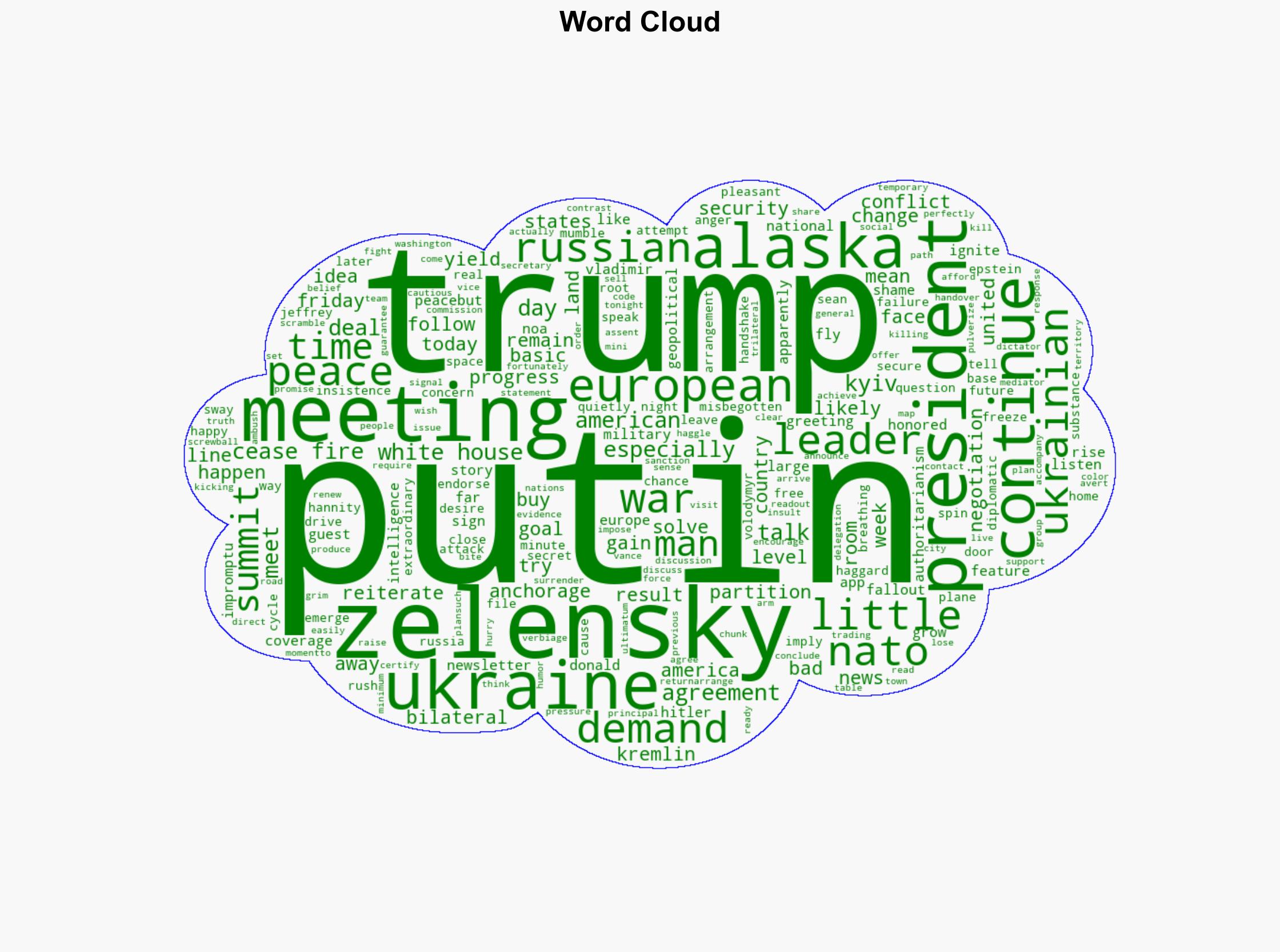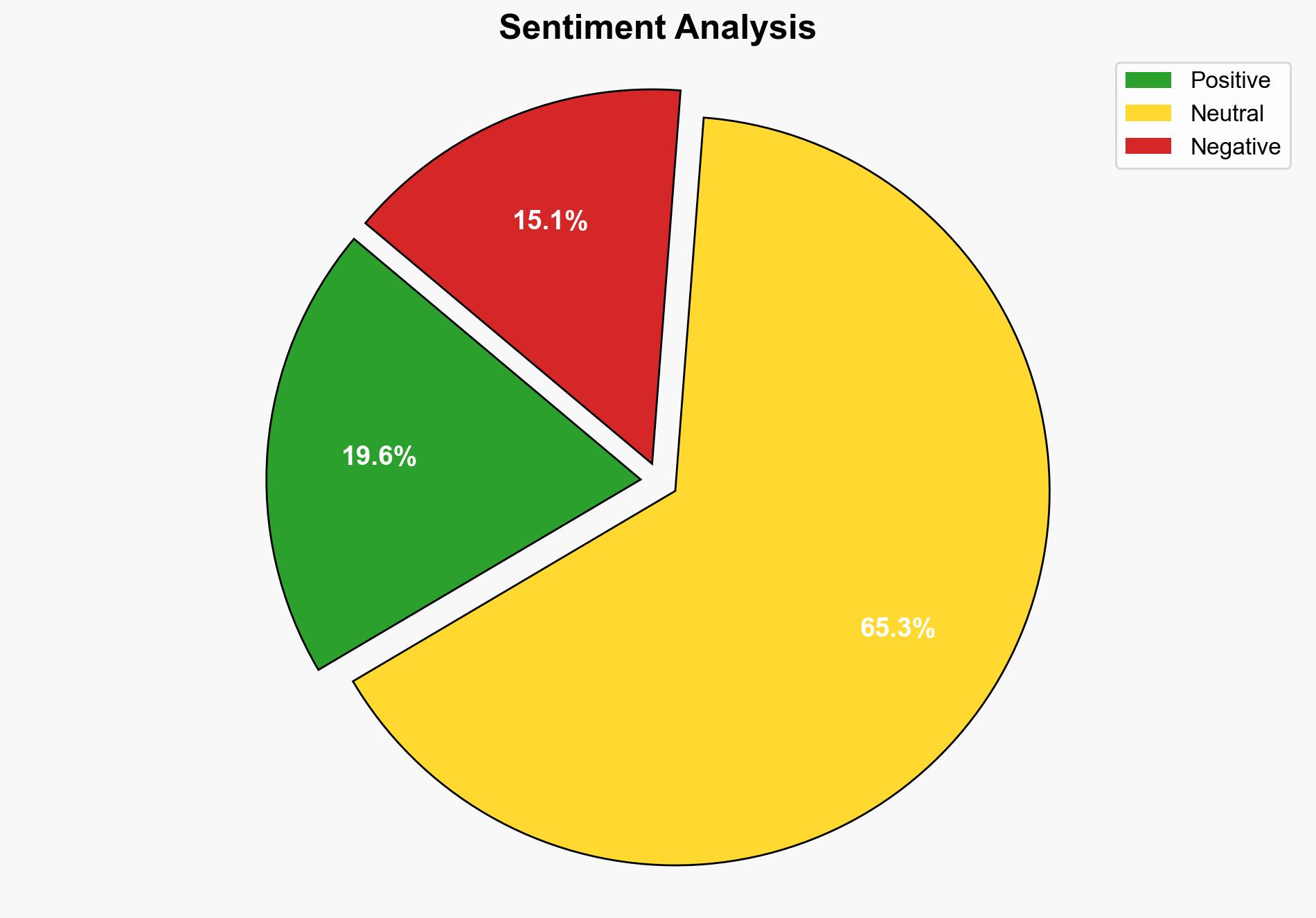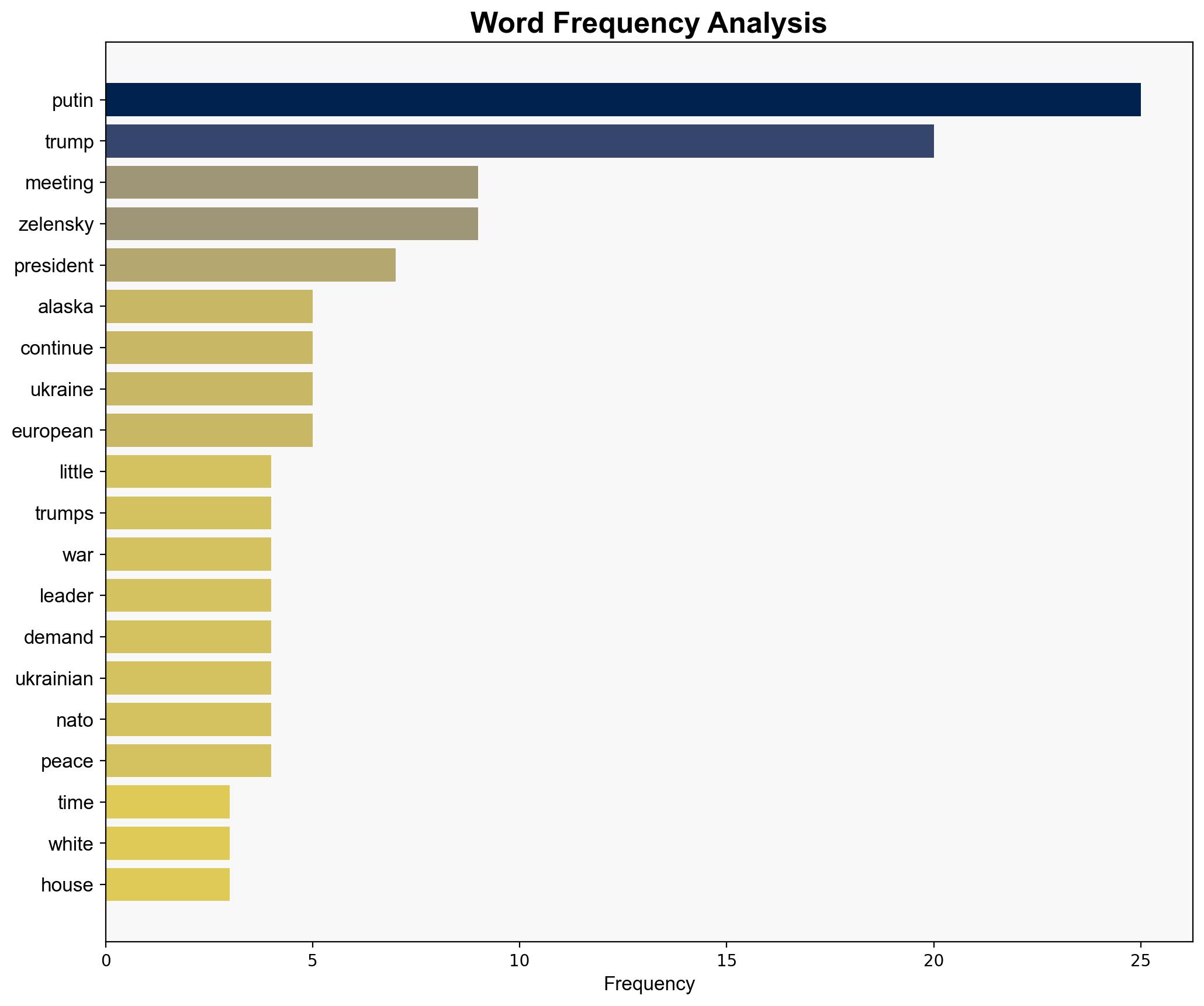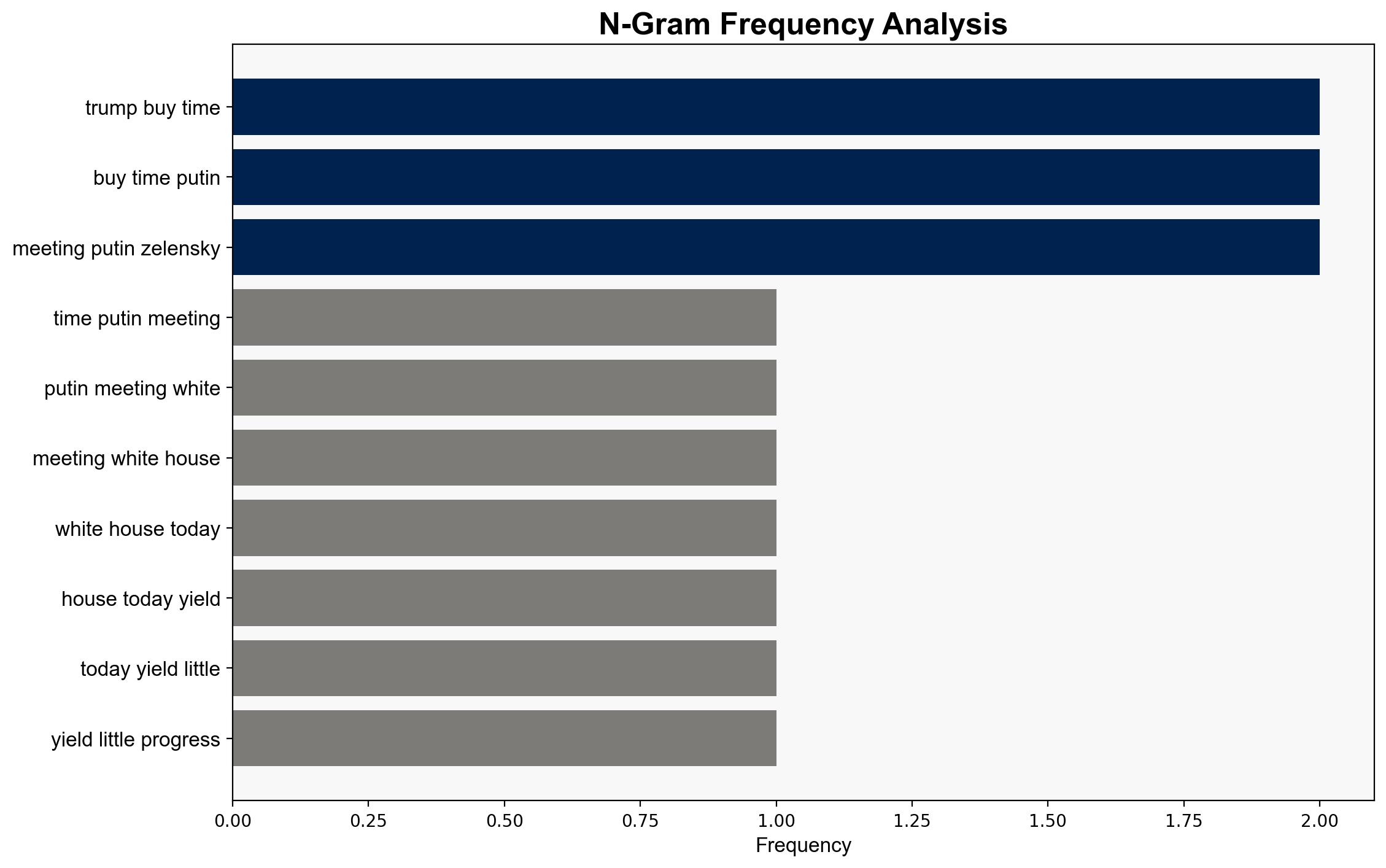Trump Buys More Time for Putin – The Atlantic
Published on: 2025-08-19
Intelligence Report: Trump Buys More Time for Putin – The Atlantic
1. BLUF (Bottom Line Up Front)
The most supported hypothesis is that Trump’s actions are inadvertently providing strategic advantages to Putin by delaying decisive international responses to Russian aggression. Confidence level: Moderate. Recommended action: Increase diplomatic engagement with European allies to counterbalance potential geopolitical shifts and prepare for a range of scenarios involving Ukraine.
2. Competing Hypotheses
1. **Hypothesis A**: Trump’s meeting with Putin is a strategic maneuver to buy time and reduce immediate tensions, potentially paving the way for a negotiated settlement in Ukraine. This hypothesis suggests a deliberate attempt to manage the conflict through unconventional diplomacy.
2. **Hypothesis B**: Trump’s actions are inadvertently benefiting Putin by creating delays and confusion, allowing Russia to consolidate its position in Ukraine. This hypothesis posits that Trump’s approach lacks strategic coherence and inadvertently aligns with Russian interests.
Using ACH 2.0, Hypothesis B is better supported due to the lack of substantial progress from the meeting and the perception of Trump’s actions as aligning with Russian objectives.
3. Key Assumptions and Red Flags
– **Assumptions**: Hypothesis A assumes Trump has a coherent strategy and the capability to influence Putin positively. Hypothesis B assumes a lack of strategic planning and potential miscommunication.
– **Red Flags**: The impromptu nature of the meeting and the absence of a clear agenda raise questions about the strategic intent. The lack of transparency and the closed-door nature of discussions are potential indicators of deception or misdirection.
– **Blind Spots**: The internal dynamics within the Trump administration and the broader geopolitical context, including European responses, are not fully explored.
4. Implications and Strategic Risks
– **Geopolitical Risks**: Potential weakening of NATO cohesion and increased Russian influence in Eastern Europe.
– **Economic Risks**: Prolonged conflict could disrupt global markets and energy supplies.
– **Cyber Risks**: Increased likelihood of cyber operations targeting critical infrastructure in response to perceived Western aggression.
– **Psychological Risks**: Erosion of public trust in U.S. leadership and international alliances.
5. Recommendations and Outlook
- Enhance intelligence-sharing and coordination with European allies to counter Russian narratives.
- Prepare contingency plans for potential escalations in Ukraine, including military and economic responses.
- Scenario Projections:
- Best Case: Successful diplomatic engagement leads to a ceasefire and negotiations.
- Worst Case: Escalation of conflict with direct NATO involvement.
- Most Likely: Continued low-intensity conflict with periodic diplomatic efforts.
6. Key Individuals and Entities
– Donald Trump
– Vladimir Putin
– Volodymyr Zelensky
– Sean Hannity
7. Thematic Tags
national security threats, geopolitical conflict, diplomatic strategy, Eastern Europe





